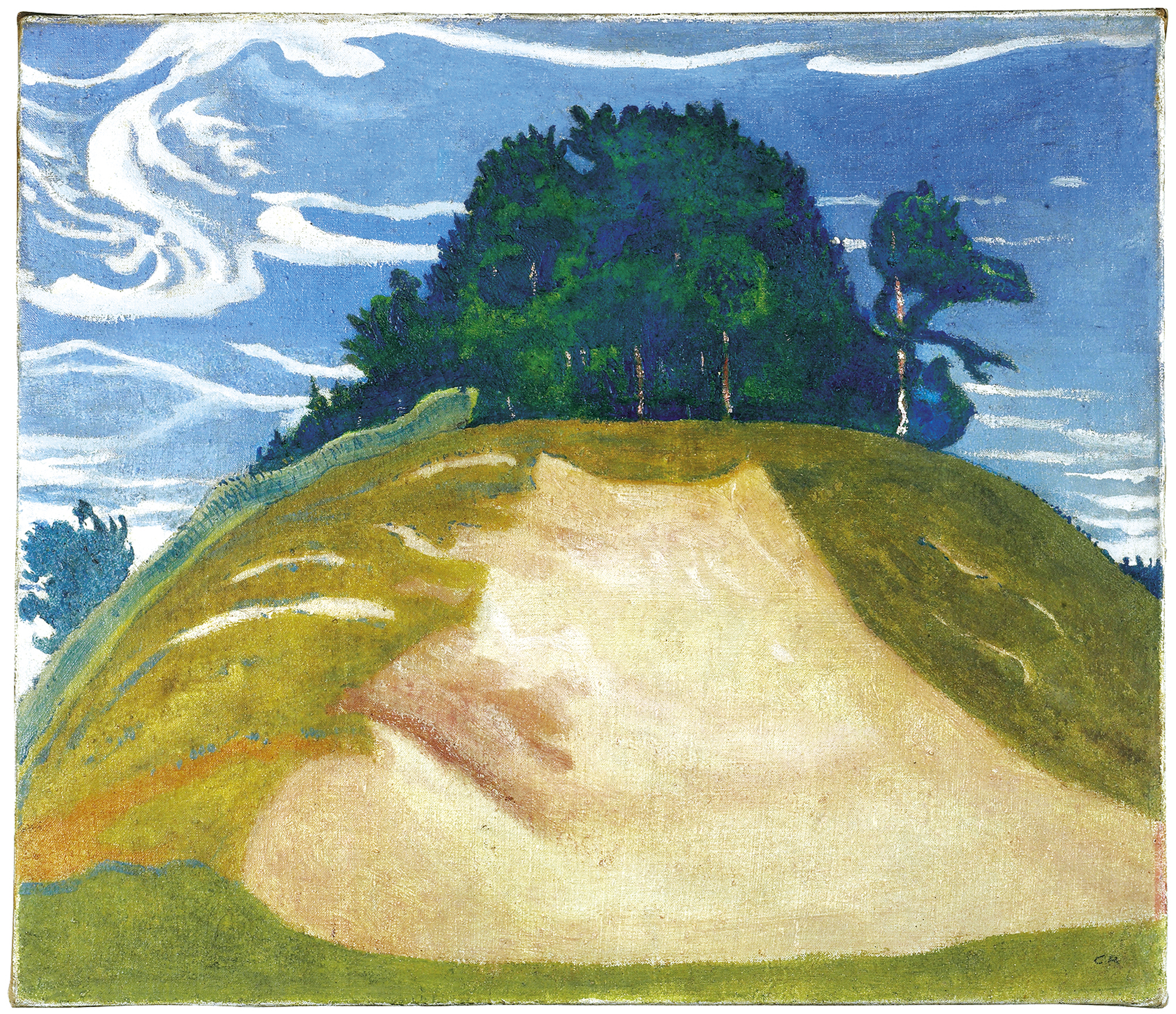The work of Cuno Amiet, focused as it was on modernity, succeeded in breathing new life and energy into colour in Swiss painting.
Born in 1868 in Solothurn, Amiet is just fifteen years old when he takes up painting. He begins his professional training at the Academy of Munich and continues his studies at the Julian Academy in Paris. He leaves to spend a year in Brittany in Pont-Aven, where he discovers the pictorial experiments of Gauguin and the Nabis, an encounter that forever changes his conception of art, setting it in a new direction. In Pont-Aven he also admires for the first time Van Gogh’s canvases and Cézanne’s work. In this way the young painter is thrust into the colourist and synthetist avant-garde before his return to Switzerland, where he will champion a new painting alongside Ferdinand Hodler.
By constantly experimenting with colour, he links the artistic trends of Fauvism in France with those he soon discovers in Germany under Ernst Ludwig Kirchner in Dresden. Nineteen hundred and four, the year he exhibits with Hodler, Edvard Munch, Axel Gallen and Jan Thorn-Prikker at the Vienna Secession, marks the beginning of Amiet’s expressionist period, which will culminate two years later in his joining the German expressionist group Die Brücke.
Important solo shows are mounted in 1914 in Zurich and in 1918 in Bern. At the height of his success, a fire in Munich’s Glaspalast in 1931 destroys fifty-one of his paintings on display. Amiet died in Oschwand in 1961 at the age of ninety-three.
Born in 1868 in Solothurn, Amiet is just fifteen years old when he takes up painting. He begins his professional training at the Academy of Munich and continues his studies at the Julian Academy in Paris. He leaves to spend a year in Brittany in Pont-Aven, where he discovers the pictorial experiments of Gauguin and the Nabis, an encounter that forever changes his conception of art, setting it in a new direction. In Pont-Aven he also admires for the first time Van Gogh’s canvases and Cézanne’s work. In this way the young painter is thrust into the colourist and synthetist avant-garde before his return to Switzerland, where he will champion a new painting alongside Ferdinand Hodler.
By constantly experimenting with colour, he links the artistic trends of Fauvism in France with those he soon discovers in Germany under Ernst Ludwig Kirchner in Dresden. Nineteen hundred and four, the year he exhibits with Hodler, Edvard Munch, Axel Gallen and Jan Thorn-Prikker at the Vienna Secession, marks the beginning of Amiet’s expressionist period, which will culminate two years later in his joining the German expressionist group Die Brücke.
Important solo shows are mounted in 1914 in Zurich and in 1918 in Bern. At the height of his success, a fire in Munich’s Glaspalast in 1931 destroys fifty-one of his paintings on display. Amiet died in Oschwand in 1961 at the age of ninety-three.









